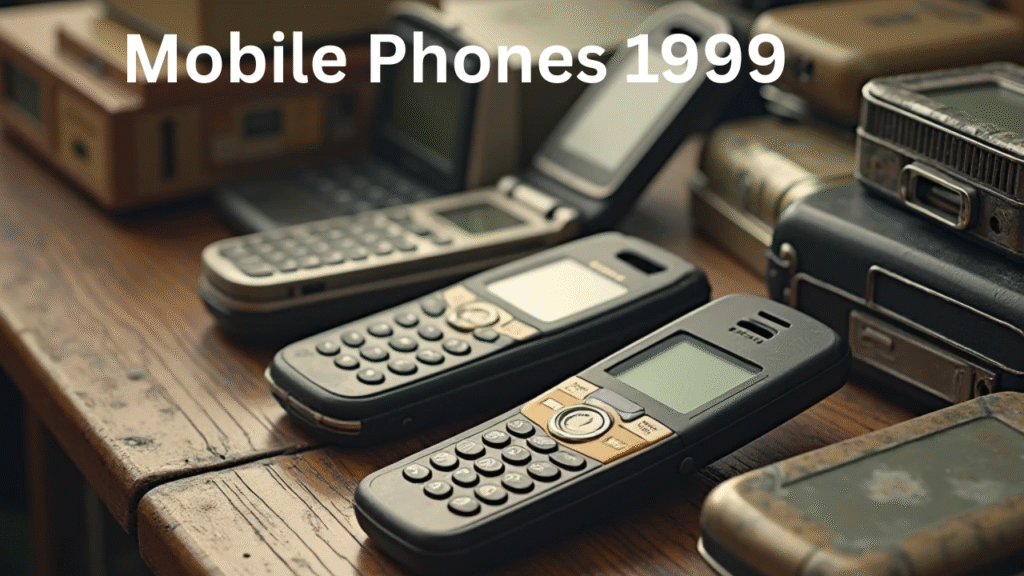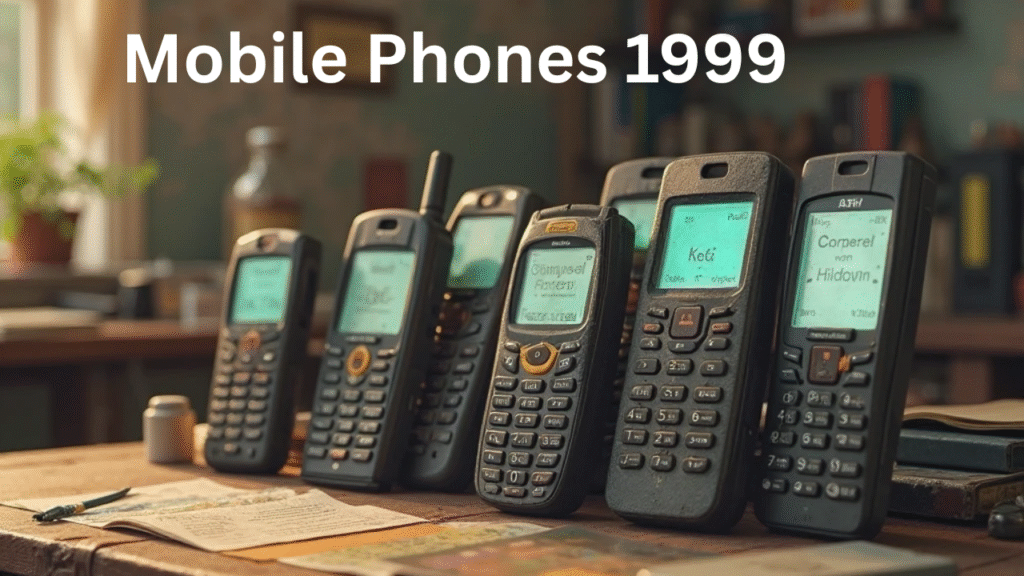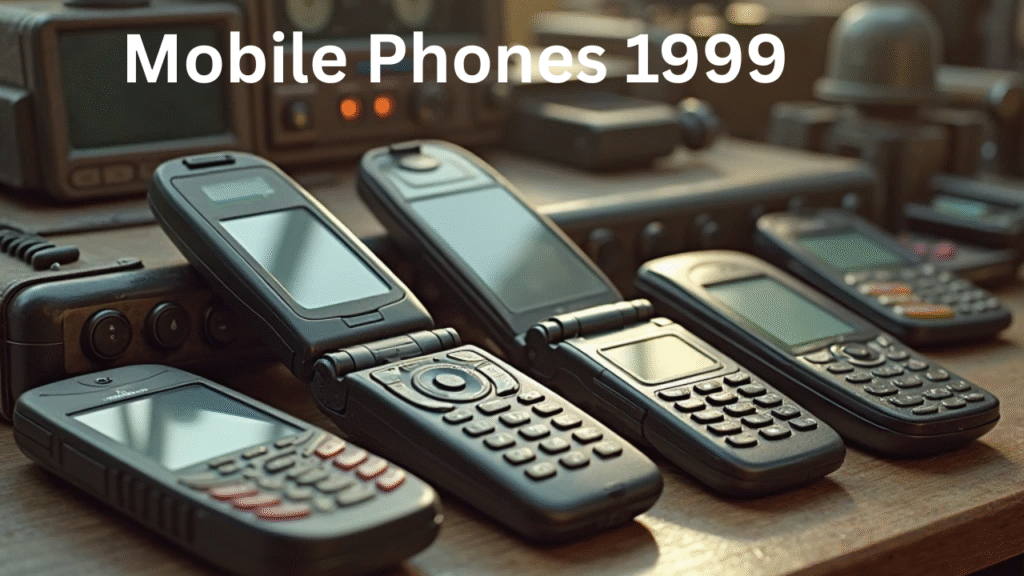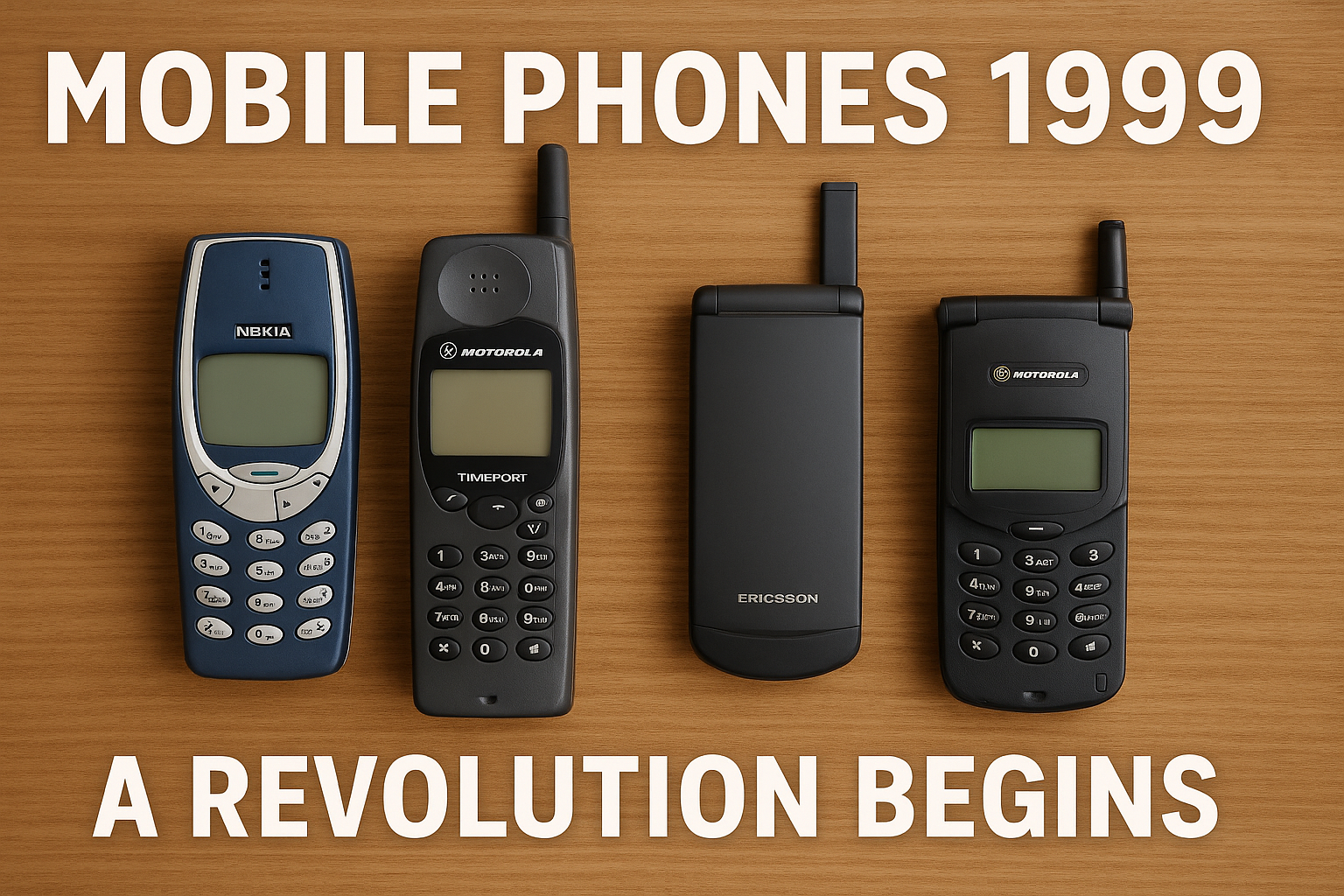Introduction: Why Mobile Phones 1999 Still Matter Today
Mobile phones in 1999 represented a turning point in technology, bridging the gap between the bulky handsets of the early ’90s and the sleeker, more functional devices that followed in the 2000s. At the time, mobile phones were no longer seen as luxury items reserved for executives—they were becoming accessible tools for everyday people. For many, owning one was about more than convenience; it was about stepping into the future of communication.
Back then, phones were primarily used for calls and text messaging. Features we now take for granted—like high-resolution cameras, social media apps, or fast internet browsing—didn’t exist. Instead, people admired long-lasting batteries, physical keypads, and iconic designs like the Nokia 3210 or the Motorola StarTAC. These models defined an era where durability and reliability were prized above all else. For students, professionals, and families, having a phone meant staying connected in ways that felt revolutionary, even if it was just through a simple SMS.
One of the challenges of that period was affordability. While prices had dropped compared to the early ’90s, mobile phones were still considered a significant investment. Network coverage was also limited in many regions, meaning people couldn’t always rely on a strong signal. Yet these limitations didn’t stop the excitement. The late ’90s saw a cultural shift, where having a phone in your pocket signaled both independence and modernity. This was also the time when prepaid plans began to gain popularity, allowing more people to join the mobile revolution without committing to expensive contracts.
The fascination with mobile phones in 1999 also came from their design and personalization. Users could swap out colorful faceplates, choose custom ringtones, and show off a device that reflected their style. For many, this was the first time technology became a form of self-expression. Although today’s smartphones far surpass those early models in features, the charm of that era lies in its simplicity. Phones were durable, easy to use, and focused on the essentials: staying connected.
Looking back, mobile phones in 1999 remind us of how far technology has come in just a few decades. They solved real problems of the time—making communication faster, more personal, and more widely available—while paving the way for the smartphones we rely on today. This period remains a fascinating chapter in tech history, showing us how innovation starts small but grows into something that transforms the world.
A New Era of Design: Mobile Phones in 1999 Redefined Portability
Mobile phones in 1999 marked a turning point in design. Devices became slimmer, lighter, and far easier to carry compared to the bulky models of the early ’90s. This shift redefined portability, making it possible to slip a phone into a pocket or small bag with ease. The use of flip designs and compact keypads created a futuristic appeal that resonated with users seeking both style and convenience. More than just tools for calling, these phones became personal accessories that expressed individuality. This design evolution set the stage for the sleek and compact devices we rely on today.
Compact Yet Impactful—How Mobile Phones in 1999 Were Designed
Manufacturers had given up the hefty “brick” phones of the early 1990s by 1999. Finally, there was a shift toward devices that were lightweight, appealing, and slim. Customers were taken aback by the sleek looks of phones like the Ericsson T28 and Nokia 8210.
The overwhelming response was good. It was unthinkable only a few years ago that people could now carry their phones in their handbags or shirt pockets. However, people with bigger fingers or visual impairments found these smaller phones irritating because they often had smaller screens and fewer keypads.
However, these designs were a huge power move by businesses trying to attract fashion-forward customers.

Functional Innovation: Features That Defined Mobile Phones in 1999
Mobile Phones in 1999 weren’t just about shrinking size—they introduced features that truly changed communication. Text messaging (SMS) became mainstream, allowing people to share quick notes without needing a call. Customizable ringtones gave users a sense of identity, while longer battery life meant phones lasted through busy days. Some models even introduced basic games like Snake, adding entertainment on the go. These features may feel basic now, but at the time, they solved real problems—making communication faster, more fun, and accessible. They represented the foundation for the advanced mobile experiences we often take for granted today.
Personalization and Fun with Ringtones and Covers
People got to completely personalize their electronic devices for the first time. You can set custom wallpapers, download monophonic ringtones, and alter the covers. The ringtone from Nokia became as recognizable as any popular tune. The experience was amazing despite the reality that the technology was old by today’s standards.
The disadvantage? The customization choices were limited, and using WAP browsers for getting new data was a cumbersome and slow process. However, it is truly powerful to feel like you have made your phone “your own.”
Early Internet Access and Infrared Connectivity
Infrared ports for wireless file sharing and rudimentary WAP internet access came on multiple of the 1999 mobile phones. At the time, these were regarded as innovative characteristics.
Unfortunately, the screen interfaces were hard to use, and the internet connection was extremely slow. However, this was an indication of a technologically exciting future for computer fanatics.
Basic Yet Revolutionary: SMS and Contact Management
In 1999, SMS began to become a cultural event, but today we take it for granted. Rather than calling, you may send friends brief, meaningful texts. Communication has been altered by texting, especially among adolescents.
However, many phones had strict character limits, and using numeric keypads to enter messages was difficult and time-consuming. However, the speed and ease of texting appeared amazing.
Top Mobile Phones in 1999 That Made Headlines
When we talk about Mobile Phones in 1999, a few iconic models immediately stand out. The Nokia 3210 became a global hit, celebrated for its durability and interchangeable covers. The Motorola StarTAC impressed with its sleek flip design, making it a status symbol of the time. Meanwhile, the Ericsson T28 caught attention for being one of the slimmest phones available. Each of these models set benchmarks in style, reliability, and usability. They weren’t just devices—they were cultural symbols. Their popularity shaped the competitive mobile industry, proving that design, function, and brand identity could win over millions of users.
Nokia 8210—A Compact Legend
One famous model was the Nokia 8210. It was a powerful package because of its lightweight design, colorful removable covers, and long battery life. Although the display was simple, customers appreciated its reliability and simplicity of use.
Its biggest flaw? Early models had no light, making them hard to use in low light. Nevertheless, in offices, organizations, and schools alike, it came with status.
Ericsson T28—Sophisticated Flip Innovation
The Ericsson T28’s voice dialing capacity, ultra-slim design, and innovative flip cover added a touch of elegance. This early attempt to marry form and function was ahead of its time.
But the T28 demonstrated brittleness. Its quality of construction received criticism for not being as robust as that of its rivals. Nevertheless, the T28 delighted customers who wanted a “cool” phone.
Motorola Timeport—For the Global Business User
With a big phonebook and tri-band capacity, the Motorola Timeport P8767 was designed with business travelers in mind. With unmatched connectivity options for its era, it was a productivity powerhouse.
Is it an adverse thing? The menu system proved perplexing and clunky. In spite of this, the phone was frequently used in the business sphere and garnered praise for its call clarity.

The Cultural Impact of Mobile Phones, 1999
The cultural shift driven by Mobile Phones in 1999 was profound. For the first time, people carried constant connectivity in their pockets. Owning a mobile phone became a sign of status and independence, especially among younger users. Teenagers embraced texting as a new form of communication, creating trends in language and abbreviations that shaped digital culture. Businesses also benefited, as professionals could stay reachable beyond the office. Beyond practicality, these phones influenced fashion, with colorful covers and accessories becoming popular. This year marked the moment when mobile phones transitioned from luxury items into everyday essentials that redefined social interaction.
Youth Empowerment Through Mobile Freedom
Teenagers and young adults acquired access to technology for the first time, which gave them a feeling of independence and power. Phones grew from tools to extensions of individuals with the introduction of prepaid SIM cards, texting, and gaming.
However, concerns about screen addiction and excess SMS pack spending started to emerge. However, it is impossible to overstate the positive psychological effects of personal device possession.
Business Communications Revolutionized
Executives relied on landlines before 1999. They were suddenly free to travel and remain linked thanks to mobile phones in 1999. It improved global interaction, productivity, and reaction times.
However, expensive call rates and problems with network coverage were real hurdles. However, the adoption rate among professionals soared in spite of these challenges.
How Mobile Phones in 1999 Influenced the Future
The smartphones of today may look very different if not for the design testing, early connection, and input from consumers of mobile phones in 1999. Users started asking for more from their gadgets, and brands made significant decisions in this crucial year.
This era has been accountable for the growth of mobile gaming, lightweight designs, and predictive text. Despite their primitive execution, the concepts were revolutionary—the ideal balance of ambition and experiment.

Conclusion: Mobile Phones in 1999—Where It All Truly Began
In the past, mobile phones from 1999 offered us an idea of the future with their odd designs, monophonic music, and blinking keypads. Although these gadgets weren’t perfect, they were bold, trustworthy, and immensely inspiring.
Examining mobile phones from 1999 is more than just a history lesson if you’re longing for a bygone era or want to know where your fascination with smartphones came from. It honors a creative time that dared to dream.
FAQs About Mobile Phones in 1999
What were the key features of mobile phones in 1999?
They featured compact designs, basic internet, SMS, infrared sharing, customizable ringtones, and long-lasting batteries.
Why were mobile phones in 1999 considered revolutionary?
They marked a shift from bulky devices to sleek, personal tech. Though not without flaws, they introduced groundbreaking features like WAP and personalization.
What made mobile phones in 1999 so popular?
Their ease of use, reliability, and cool design made them instantly lovable. They brought mobile communication to the masses.
Were mobile phones in 1999 affordable for everyone?
No, most high-end models were quite expensive. However, prepaid services made them accessible to more users than before.
Can we still use mobile phones from 1999 today?
Technically, yes—if they support 2G GSM networks. But they lack modern functionalities, making them more of collector’s items.


3 thoughts on “Mobile Phones In 1999: The Power Era That Transformed Communication Forever”